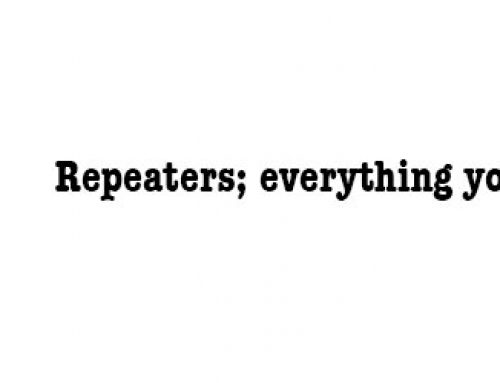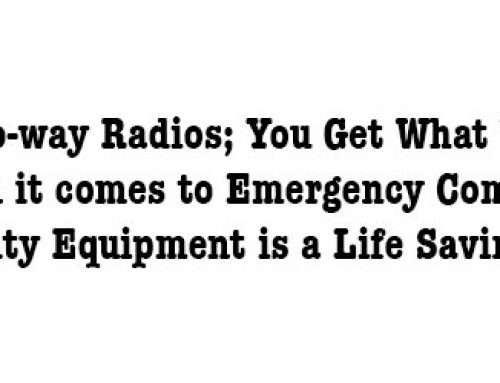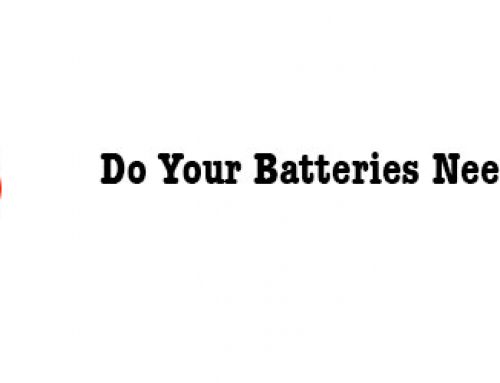Low Band, VHF, UHF – Two-way Radio Frequencies Explained
Understanding Frequency Bands and how the effect radio performance
In basic terms, radio frequency or RF is the frequency of the waves transmitted by a specific radio station. When your radio is connected to an antenna electromagnetic energy is carried over the frequency the radio is tuned to. Your voice or data is carried in that electromagnetic energy over the radio frequency. A frequency is also associated with a number which is its wavelength measurement, and an example would be 465.000 MHz (Megahertz) for a UHF frequency.
This wavelength is important because the length of the radio wave will determine the purpose of your communications. Long waves have good bounce characteristics for long-distance communications but are terrible at penetrating buildings and terrible in urban areas. Short waves are great at penetrating buildings and in urban areas but are not great at closing long distances.
These lengths can also be equated to a physical length think of a wooden pole some pole lengths can be 2 feet long and others can be miles long. Once these poles hit a physical object like a building or a bridge they bounce or are absorbed by the object. Later on in this article, we will give practical examples to further illustrate this point.
Another way to look at RF is to think of them as roadways that have very specific lengths and speed limitations/restrictions. There are Interstate Highways, Country roads, local roads, and small roads. Each road has a specific purpose and the amount of traffic on these roads varies and is regulated to the region on which they are located.
In radio terms frequencies are also grouped into bands, for the purpose of this article we will discuss three bands in particular Low Band, VHF (Very High Frequency), and UHF (Ultra High Frequency).
Low Band
Is typically in the 29.7MHz to 50.0MHZ range of frequencies. Low Band radios are used when trying to cover long distances like 50 to 100 miles of rural terrain. These frequencies also are allowed to be licensed for high power outputs from the radio like 50 to 500 Watts of power for its antenna in some instances, Radio waves in this band can belong ¾ of a mile long to about 6 miles long. This is why it’s a great band to cover long distances. They are terrible at penetrating buildings because trying it to fit a wave that’s ¾ to 6 miles long inside your building is hard there are only so many ways that wave could fit through a window or doorway.
VHF (Very High Frequency)
Is typically is the 136MHz to 175MHz range of frequencies. VHF radios are used when trying to cover long distances like 10 to 25 miles of terrain. These frequencies also are allowed to be licensed for high power outputs from the radios antenna like 25 to 110 watts of power in some instances. Many public safety organizations like Police, Fire, EMS, and OEM often operate on VHF because they can cover their city and town effectively. The downside of VHF is it is terrible for in-building coverage. This is because its wave can be 32 feet long, and it’s hard to fit a 32-foot-long wave inside a building, it can only go in so many ways before it gets absorbed by the building. VHF is also great went you need to communicate in mostly outdoor situations, like regional delivery services, taxi services, day camps in the forest, and hunting. In some areas of the United States, it is a challenge to get a new license for VHF frequency, especially for Public Safety, this is because there is only so much radio bandwidth and many of VHF frequencies are already in use by other organizations.
UHF (Ultra High Frequency)
Is typically in the 400MHz to 520MHz range of frequencies. These frequencies also are allowed to be licensed for power outputs from the radios antenna like 25 to 50 watts of power in some instances. UHF is great for in-building coverage of high-rise buildings, schools, warehouses, and manufacturing plants, and for covering cities in urban areas. The wave of a UHF signal is about 3 feet long so it can easily penetrate buildings filled with concrete and steel. The downside of UHF is that it is not great for long-distance communication over a few miles.
Each of these bands Low Band, VHF & UHF have its upsides and downsides, it all depends on what you are trying to achieve, who you are trying to communicate with, and how far are looking to reach with a radio. Before you buy a two-way radio it all starts with an FCC license; the FCC puts limitations on how many users can be on a particular frequency, its power output, and the location of the license. Your organization may already have an FCC license, is so it will tell you what you are licensed for, and that license will spell out the frequency you are allowed to operate on.
If you don’t have an FCC license we can help you obtain one from the FCC, we will need to ask a series of questions to determine your communications goals and what band is best suited for your needs and budget.
In designing a two-way radio communication system no matter how large or small there is comprises, and you should never expect 100% coverage no matter which band you choose to operate on. The laws of physics are definite, but with the right plan and understanding, we can help you design a system that will accomplish your communications goals.
We are always open to questions and look forward to helping you.



